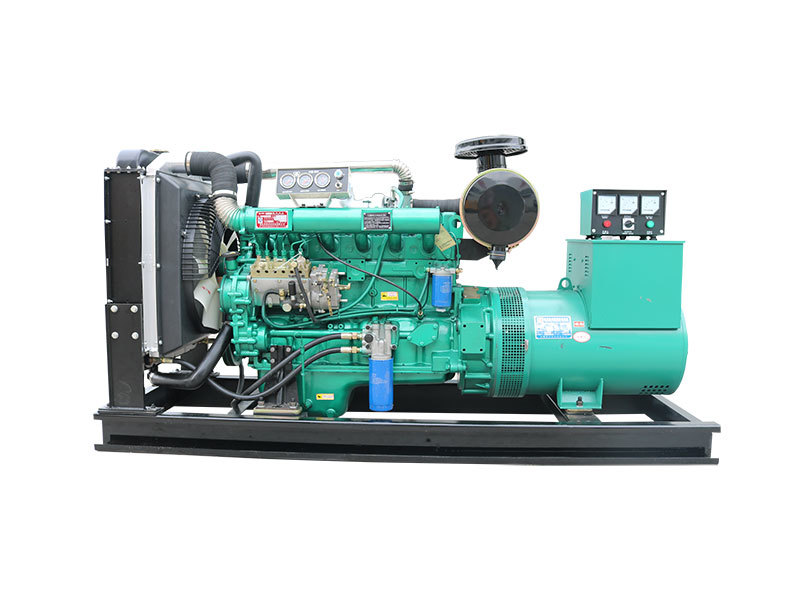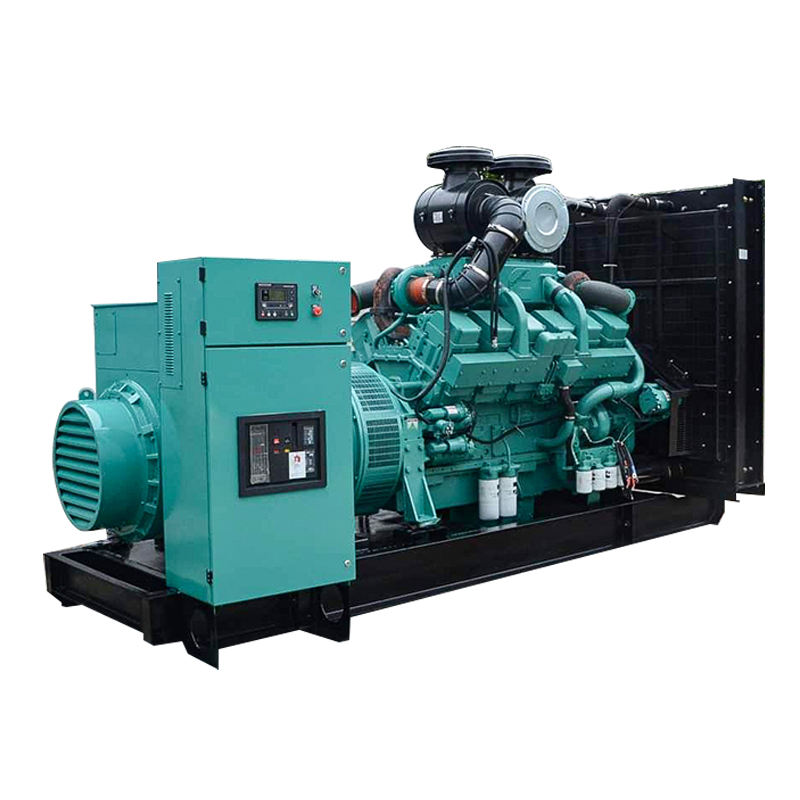The question "What is the difference between a stator and a generator?" highlights a common point of confusion, especially for those new to the world of electrical engineering. The core difference, simply put, is that a stator is a component of a generator, not a separate device altogether. Think of it like this: a wheel is a component of a car, but the car is the entire vehicle. Similarly, the stator is a crucial stationary part within a generator, contributing to the overall process of electrical energy production. To truly understand the nuances, it's important to delve deeper into the function of each and how they interact. After all, generators are complex machines, and appreciating each part's contribution gives you a much clearer picture.
Understanding the Stator
The stator, derived from the word "stationary," is exactly that: the immobile part of a rotating electrical machine, whether it's a generator or a motor. Its primary function in a generator is to house the conductors (usually coils of wire) in which electricity is induced. These conductors are arranged in such a way that, as a rotating magnetic field passes over them, a voltage is generated. You can visualize it as a meticulously crafted framework, where electricity is literally "caught" from the magnetic field. The stator typically consists of a laminated iron core, which is designed to concentrate the magnetic field, and the aforementioned windings, meticulously placed within slots in the core. The number of windings and their arrangement directly influence the voltage and current output of the generator. So, while it doesn't physically move, the stator is absolutely critical in converting mechanical energy into electrical energy. Have you ever considered how precisely engineered these seemingly simple components must be to handle the high currents and voltages involved?
Delving into the Generator
A generator, on the other hand, is a complete electromechanical device that converts mechanical energy into electrical energy. This conversion relies on the principle of electromagnetic induction, discovered by Michael Faraday. In essence, a conductor (usually a wire) moving through a magnetic field will experience a voltage. This voltage, in turn, can drive a current through a circuit. A generator typically consists of two main components: the stator (which we've already discussed) and the rotor. The rotor is the rotating part, and it carries either permanent magnets or electromagnets. The mechanical energy, often supplied by a turbine (powered by steam, water, or wind), an engine (burning fuel), or some other source, turns the rotor. As the rotor spins, its magnetic field sweeps across the stator windings, inducing a voltage. The generator then channels this electrical energy to external circuits for use. Think of a generator as a system with many interconnected parts, and the stator as the stage where the magic of electromagnetic induction happens.
The Interplay: Stator and Rotor Dynamics
The relationship between the stator and rotor is fundamental to a generator's operation. The rotor generates a magnetic field, and the stator provides the conductors that "catch" this magnetic field to produce electricity. The interaction between these two components determines the generator's characteristics, such as its voltage, current, frequency, and power output. The design of both the stator and rotor is carefully optimized to maximize efficiency and performance. For example, the number of poles (north and south magnetic poles) on the rotor, along with the number of slots and windings on the stator, directly affects the frequency of the generated electricity. A greater number of poles results in a higher frequency for the same rotational speed. The materials used in their construction, such as the type of iron for the core and the type of wire for the windings, also play a significant role. It's a precisely orchestrated dance between magnetism and conductors, carefully designed to provide us with the electricity we rely on daily.
Practical Examples of Stators and Generators
Generators are ubiquitous in modern life, powering everything from small portable devices to entire cities. Large-scale power plants utilize massive generators driven by steam turbines (coal, natural gas, nuclear) or hydroelectric turbines (water). These generators supply the grid with the electricity we use in our homes and businesses. Smaller generators are used as backup power sources in hospitals, data centers, and other critical facilities. In automobiles, alternators (which are essentially AC generators) charge the battery and power the electrical system. In each of these applications, the stator plays its vital role, providing the framework for electricity generation. Consider a wind turbine: the blades rotate, turning a generator inside the nacelle (the housing at the top). The stator within that generator remains stationary, capturing the energy of the moving magnetic field and converting it into usable electricity. Without the precisely engineered stator, that wind turbine would be nothing more than a rotating set of blades.
Types of Stator Windings
The configuration of the stator windings is a crucial factor in determining the generator's performance characteristics. There are primarily two types of stator windings: lap windings and wave windings. Lap windings are characterized by having multiple parallel paths for the current to flow, resulting in higher current capacity at lower voltages. Wave windings, on the other hand, have only two parallel paths, leading to lower current capacity but higher voltages. The choice between lap and wave windings depends on the specific application and the desired output voltage and current. Furthermore, the windings can be connected in either a wye (Y) or delta (Δ) configuration. Wye connections provide a neutral point, which can be used for grounding and for providing single-phase power in addition to three-phase power. Delta connections, in contrast, do not have a neutral point and are typically used for applications where only three-phase power is required. The specific design and configuration of the stator windings are critical to achieving the desired performance characteristics of the generator.
Rotor Designs and Their Influence
The design of the rotor also profoundly affects the performance of the generator and, consequently, the demands placed on the stator. Two primary rotor designs are used in generators: salient pole rotors and cylindrical rotors. Salient pole rotors have distinct, projecting magnetic poles, typically used in low-speed generators like those found in hydroelectric plants. These rotors are relatively easy to manufacture and are well-suited for applications where the rotational speed is limited. Cylindrical rotors, also known as non-salient pole rotors, have a smooth, cylindrical shape with embedded field windings. These rotors are used in high-speed generators, such as those found in steam turbine power plants. The cylindrical shape allows for higher rotational speeds without excessive mechanical stress. The magnetic field strength and distribution produced by the rotor directly influence the voltage induced in the stator windings. The stator must be designed to withstand the magnetic forces and electrical stresses generated by the rotor, making it a critical component in ensuring the overall reliability and performance of the generator. What design considerations do you think are most crucial when choosing between a salient pole and cylindrical rotor design?
Stator Cooling and Maintenance
Generators, especially large ones, generate a significant amount of heat due to resistive losses in the stator windings and core. This heat must be effectively dissipated to prevent damage to the insulation and ensure reliable operation. Various cooling methods are employed, including air cooling, hydrogen cooling, and liquid cooling. Air cooling is the simplest and most common method for smaller generators, while hydrogen cooling is used for larger generators due to its superior heat transfer properties and lower density. Liquid cooling, typically using water or oil, is employed in very large generators where even hydrogen cooling is insufficient. The stator's design must incorporate adequate cooling channels and ventilation to ensure that heat is effectively removed. Regular maintenance is also crucial to ensure the long-term reliability of the stator. This includes inspecting the windings for signs of damage or deterioration, cleaning the cooling channels, and testing the insulation resistance. A well-maintained stator is essential for the reliable and efficient operation of the generator. What signs would indicate that a stator is experiencing overheating issues?
Stator vs. Generator: A Recap
To reiterate, the stator is a core component *within* a generator. It is the stationary part that houses the windings where electricity is induced through the interaction with the rotor's magnetic field. The generator, on the other hand, is the complete machine that converts mechanical energy into electrical energy. The stator is thus an integral piece of the larger system of the generator. Understanding this relationship is critical for anyone working with or studying electrical power generation. It's the difference between understanding the function of a single organ and understanding the entire body, and how it works together. It is also worth noting, that some smaller, simpler generators may have permanent magnets on the rotor and the induced electricity is generated directly in the rotating part, but most large-scale power generation relies on the stator/rotor relationship we've described.
The Future of Stator and Generator Technology
As technology advances, both stator and generator designs continue to evolve, driven by the need for increased efficiency, higher power density, and improved reliability. Research is focused on developing new materials with higher temperature resistance and better electrical conductivity for the stator windings. Advancements in magnetic materials are also leading to more efficient rotor designs. Furthermore, sophisticated control systems are being developed to optimize the performance of generators and minimize losses. One exciting area of research is the development of superconducting generators, which utilize superconducting materials in the stator windings to eliminate resistive losses and significantly increase efficiency. While still in the early stages of development, superconducting generators have the potential to revolutionize power generation. The future of power generation will undoubtedly see continued innovation in both stator and generator technology, leading to more efficient, reliable, and sustainable energy sources. The push for more efficient renewable energy is also driving this innovation.
In conclusion, grasping the distinction between a stator and a generator is fundamental to understanding how electrical power is generated. The stator, as a vital component within the generator, provides the framework for the conversion of mechanical energy into electrical energy. Recognizing this key relationship allows one to appreciate the intricate workings of these essential machines that power our modern world. The next time you flip a light switch, remember the intricate dance of electromagnetism occurring within the generator, with the stator playing its silent but crucial role.





